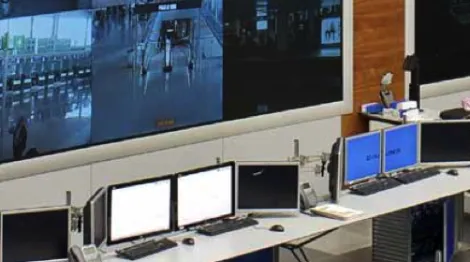Reduce Electricity Costs in Water Treatment Plants by Dedicating more Energy to Data Analysis.
Electricity consumption is one of the main operating costs of water (WTP) and wastewater (WWTP) treatment plants, so it is essential to take energy optimization strategies.

Electricity consumption represents a significant portion of operating expenses in water treatment plants (WTPs) and wastewater treatment plants (WWTPs), which is why optimizing energy use is so important in these scenarios. But what exactly do we mean by this optimization?
Saving energy goes beyond simply turning equipment on and off. On the contrary, energy control and management ranges from the analysis of pumping curves to the reduction of unaccounted-for water leaks, including the scheduling of operations around special rate windows. These actions, which are possible thanks to data exploitation, have an impressive amortization potential.

Understand Data Correlations to Control Costs.
Energy represents at least 30% of operating expenses (OPEX) in water services, a figure that increases during peak wastewater aeration demand. Again, we could say that there are strong incentives to reduce energy consumption.
As two of the largest energy consumers on the local grid, WTPs and WWTPs can benefit financially if they partner with power supply companies interested in reducing peak demand. However, for this to occur, they require adequate infrastructure and solid data for decision-making.
An operational intelligence system that better links physical infrastructure data with decision-makers can transform operations. By easily accessing real-time plant operating conditions and analyzing historical trends, decision-makers at a water utility or consulting firm can identify better options for reducing stresses on physical operations and OPEX.

Once this is achieved, modeling and analysis of long-term opportunities can also contribute to making more informed decisions about capital expenditures (CAPEX).
A Small (Big) Step to Start.
If you want to choose an affordable and scalable analysis solution to start with, you don’t need it to contain a large volume of data: 1,000 tags may be enough, represented in sensors, instrument inputs, data resources existing in the organization or in the cloud, and so on. This small investment can begin to pay off in a matter of days.
In addition, there are some energy-related decisions that can be improved with the right information:
- Leak identification:
Unaccounted-for water due to leaks wastes energy, treatment chemicals, and plant capacity, affecting the bottom line.
We see this in the case of a company with 90,000 customers, which, thanks to identifying leaks quickly, managed to greatly reduce operating costs, with annual savings of $300,000 in the first week, $900,000 in two years, and a deferred long-term capital expenditure of $20 million in two decades. - Pump efficiency monitoring:
Any water supply company can monitor the efficiency of pumps by measuring the amount of energy required to move a certain volume of water (for example, to fill a tank). With an integrated analytical solution, such as AVEVA PI Data Infrastructure, it is possible to automate the process and monitor how much the actual performance deviates from the specific curves of the pumps. Also, a digital solution of this type allows prioritizing which pumps need more maintenance attention based on how much they deviate from ideal performance. It can also be configured to trigger an alarm when performance deviates beyond an acceptable percentage.
Also, a digital solution of this type allows prioritizing which pumps need more maintenance attention based on how much they deviate from ideal performance. It can also be configured to trigger an alarm when performance deviates beyond an acceptable percentage. - Process improvement modeling:
One of the biggest challenges faced by internal engineers and consultants in charge of designing or refining energy-efficient WTP and WWTP operations is having real operating data to model and test alternative approaches. An affordable challenge with a good analytical solution. Also, thanks to direct access to this data, consulting engineers can offer their own analytical services to clients of utility organizations.
Multifaceted Energy Saving Strategies.
Responding to the demand for drinking water or the influx of wastewater without considering energy costs can be expensive. Having a historical idea of flow trends and energy demands can give WTPs and WWTPs the ability to adopt more efficient scheduling without disrupting treatment processes. In this context, some strategies that enhance energy savings are:
- Time-of-use rates:
Balancing water movement needs with electricity costs during periods of higher electricity rates is a simple way to reduce the overall energy costs of WTPs. Making appropriate decisions, for example, on how to manage reservoirs and water replenishment of towers based on electricity rates and historical consumption analysis maximizes those savings opportunities. - Demand-adjusted contracts:
Water and sanitation organizations can benefit from lucrative electricity rates through demand-adjusted contracts with their electricity companies, provided they have the knowledge and flexibility to modify electricity consumption based on comprehensive analysis.
Flexibility in infrastructure and a good database and analytical resources allow meeting treatment demands, even with large motors idling to avoid peaks in energy demand, and achieving significant energy savings. - Cogeneration control:
Wastewater treatment plants that use anaerobic digesters generate biogas that can be used to generate supplemental energy. In these types of situations, the ability to compare energy costs with treatment demands helps energy managers and plant managers make informed decisions to optimize cogeneration scheduling.





